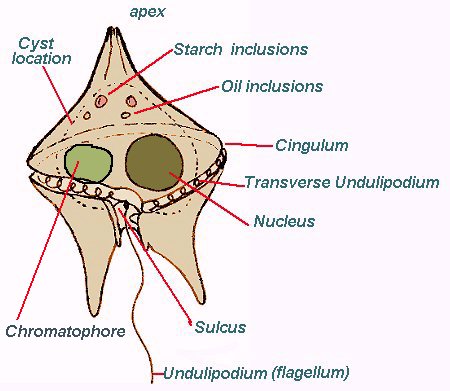 Recently researchers have uncovered a gene in corals that responds to day/night cycles, which provides some tantalizing clues into how symbiotic corals work together with their plankton partners.
Recently researchers have uncovered a gene in corals that responds to day/night cycles, which provides some tantalizing clues into how symbiotic corals work together with their plankton partners.WHAT ARE CORALS?
Corals are fascinating animals in term that they form the largest biological constructions in the world. They exist as small sea anemone-like polyps, typically in colonies of many identical individuals. The group includes the important reef builders that are found in tropical oceans, which secrete calcium carbonate to form a hard skeleton.

Interesting fact about this is, that sprawling coral reefs cover less than 0.2 % of the seafloor yet provide habitats for more than 30% of marine life. In shallow waters that don't have abundant food, corals have developed a close relationship with small photosynthetic critters called dinoflagellates.
DINOFLAGELLATES
The Dinoflagellates are Photosynthetic Creatures that use sunlight to produce energy for the coral, which in turn use that energy to construct mineralized skeletons for protection. This mineral production is known as Coral Calcification. This is closely tied with the day/night cycle and molecular mechanism behind this synchronization is mysterious till date.

AURELIE MOYA: THE MIND BEHIND RESEARCH
Aurelie Moya and colleagues during their research have succeeded in finding the mystery behind this synchronization of Dinoflagellates. They have characterized the first coral gene that responds to the light cycle They named this gene as STPCA.
This gene makes an enzyme that converts Carbon Dioxide to Bicarbonate (baking soda) and is twice as active at night compared to daytime.
WHAT THEY HAVE FOUND?
The researchers have found that this enzyme concentrates in the watery layer right under the calcified skeleton. Moya and colleagues determined that STPCA becomes more active at night to cope with acid buildup.
The calcification process requires many hydrogen atoms, which during the day can be removed by photosynthesis. But at night, however, hydrogen accumulates which increases the acidity of the coral and to cope up with this increased acidity STPCA creates extra bicarbonate as a buffer to prevent acid damage.
Scerets behind Memories
 Scientists at UCLA (University of California, Los Angeles) and the Weizmann Institute of Science, Israel have discovered the process
Scientists at UCLA (University of California, Los Angeles) and the Weizmann Institute of Science, Israel have discovered the processthrough which memories are made and then recalled. These scientists have recorded that How individual brain cells calls up a memory?, thus revealing where in the brain a specific memory is stored and how the brain is able to recreate it.

Dr. ITZHAK FRIED
Dr. Itzhak Fried, Senior Study Suthor and a UCLA Professor of Neurosurgery with his colleagues recorded the activity of hundreds of individual neurons making memories in the brains of 13 epilepsy patients being treated surgically at UCLA Medical Center. Their research detail has been reported in current online edition of the Journal Science.
EXPERIMENT
Surgeons at UCLA Medical Center placed electrodes in the patients' brains to locate the origin of their seizures before surgical treatment which is a standard procedure in such cases. Dr. Fried used same electrodes to record the neuron activity as memories were being formed.
During the experiment patients were shown several video clips of short duration, including such things as landmarks and people, along with other clips of Jerry Seinfeld, Tom Cruise, "Simpsons" character Homer Simpson and others. As the patients watched these clips, researchers recorded the activity of many neurons in the Hippocampus and a nearby region known the Entorhinal Cortex that responded strongly to individual clips.
Few minutes after watching these clips, the patients were asked to recall whatever clips came to mind. During this recalling process these patients were not prompted to recall any specific clips," but to use "free recall' which means, whatever popped into their heads.
At this point researchers found that the same neurons that had responded earlier to a specific clip fired strongly a second or two before the subject reported recalling that clip. These neurons did not fire, however,when other clips were recalled. By observing this researchers found that which clip a patient was recalling before the patient announced it.
During this experiment Dr. Fried noted that the single neurons that were recorded as they fired were not acting alone but were part of a much larger memory circuit of hundreds of thousands of cells caught in the act of responding to the clips.
SIGNIFICANCE
This research is significant in the fact that it confirms for the first time that spontaneous memories arise through the activity of the very same neurons that fired when the memory was first being made. This link between reactivation of neurons in the Hippocampus and conscious recall of past experience has been suspected and theorized for sometime, but the study now provides direct evidence for this.
So we can say that, Reliving past experience in our memory is the resurrection of neuronal activity from the past.
FUNDING
The research was funded by the U.S. National Institute of Neurological Disorders and Stroke, as well as the Israel Science Foundation and the U.S.-Israel Binational Science Foundation.







